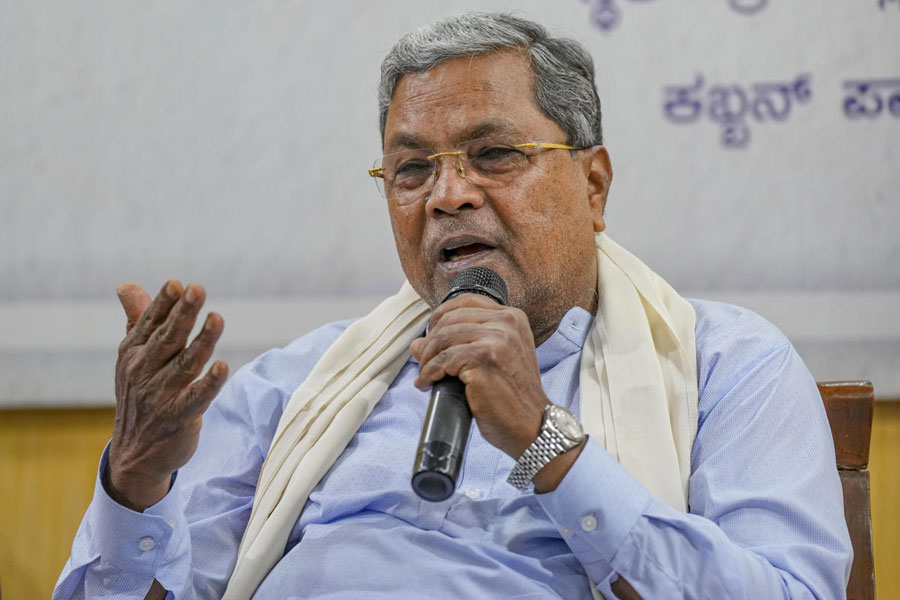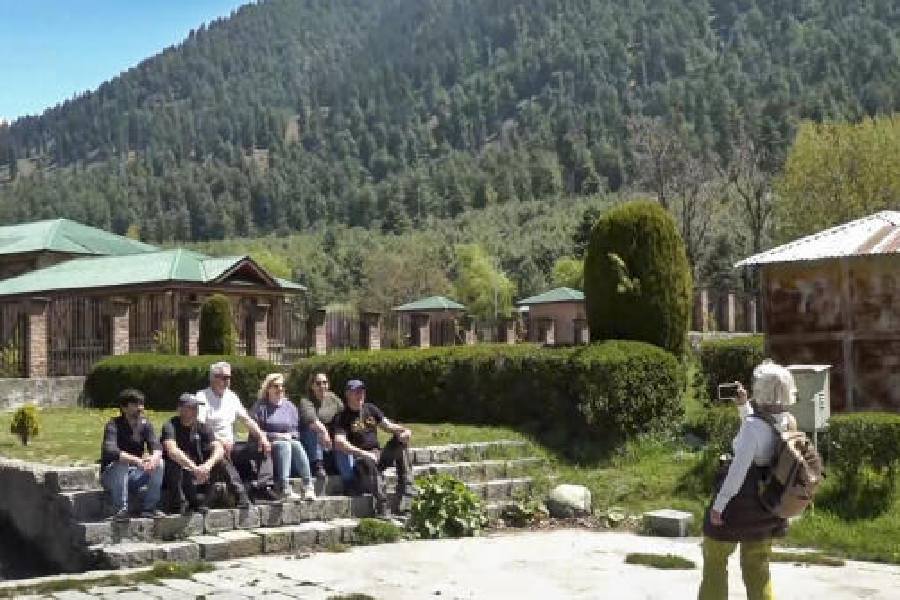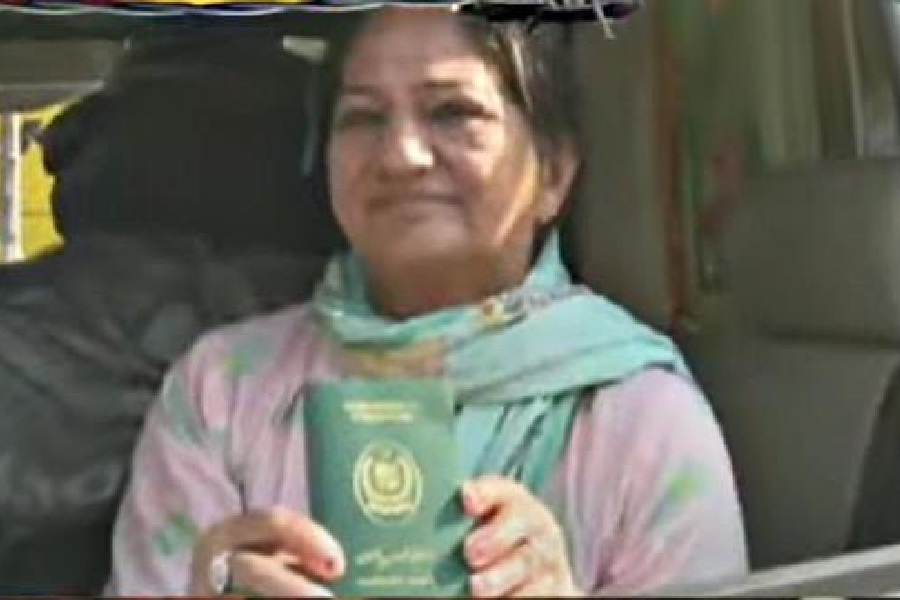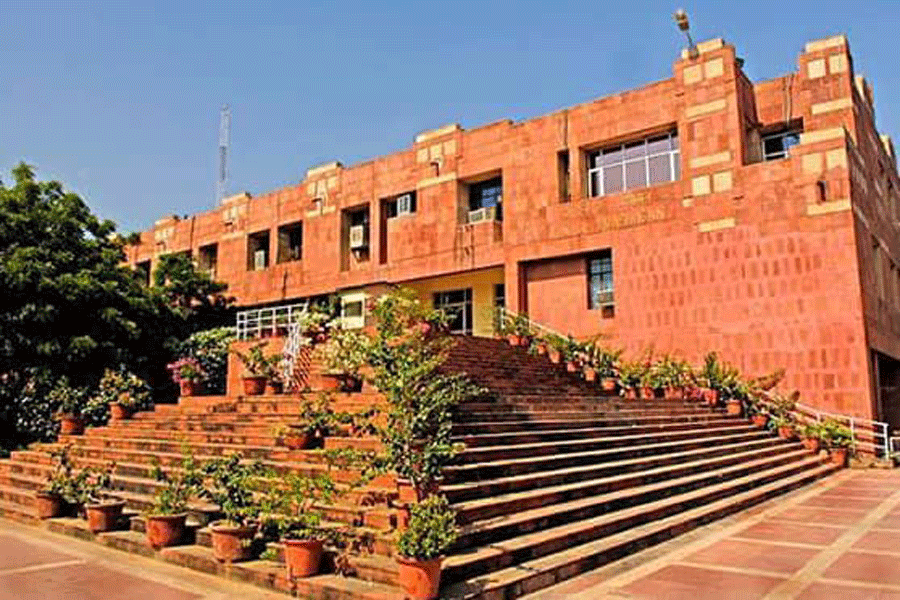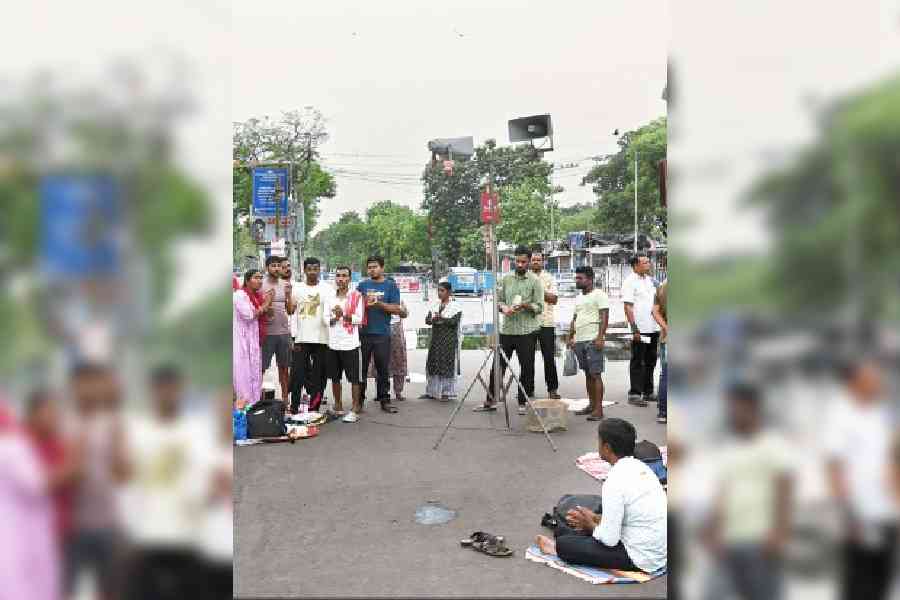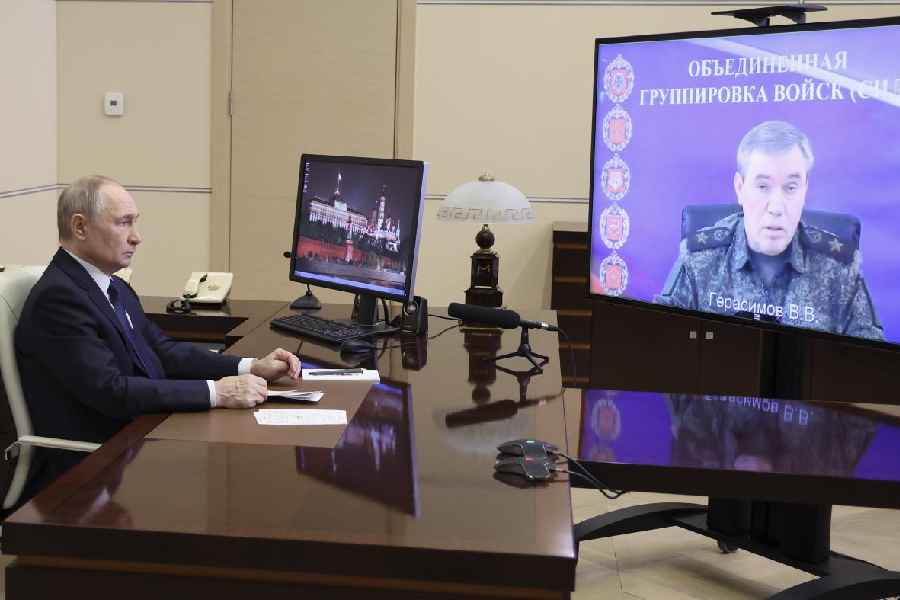.jpg)
Calcutta: The audience at Bengal Club was treated to rare, intimate glimpses into three remarkable, intertwined lives: of C.F. Andrews, Rabindranath Tagore and M.K. Gandhi.
Intertwined not only because of their close friendship and their engagement with India's freedom struggle. They wrote letters to each other for the better part of three decades, starting just before Tagore found world renown and Gandhi returned to India from South Africa.
On Friday, historian Uma Dasgupta introduced her latest book, Friendships of 'Largeness and Freedom', Andrews, Tagore and Gandhi: An Epistolary Account, 1912-1940, telling the story of this extraordinary exchange of letters through a presentation of slides, and at least one extraordinary transformation.
The book has been published by Oxford University Press.
Andrews met Tagore in London in 1912, at a reading of Tagore's poetry hosted by artist William Rothenstein at his house. The famous reader of Tagore's poetry that evening was the poet W.B. Yeats.
Anglican missionary Andrews, who was then teaching at St Stephen's College, was in the audience. In despair over white racism in India and about the role of his church, he was on furlough in England when he met Tagore at the reading.
The evening of Tagore's poetry transformed Andrews. He spent the night under an open sky in Hamstead Heath. "There, all, alone, I could at last think... of a universal human heart...," Andrews wrote.
His letters to Tagore are intense, full of admiration and fervour. Andrews would leave his order soon. He wanted to come to Santiniketan and join Visva-Bharati, which he would eventually, and would play an important role there. But before that he would visit South Africa to meet Gandhi on the request of both Gopal Krishna Gokhale and Gandhi.
In December 1913, Gokhale had held a meeting in Delhi to support Gandhi's movement in South Africa. Andrews had wanted to donate his life's savings, which were not a fortune, to the cause. Gokhale had been reluctant to accept it.
On January 2, 1914, Andrews landed in front of Gandhi and touched his feet. Soon, of the same age, they were "Mohan" and "Charlie" to each other. Gandhi returned in 1915.
Gandhi's, Andrews' and Tagore's story spanned Delhi, London, Shimla, Santiniketan and South Africa, and was also the story of India's freedom struggle, the ground on which the three men converged, at the same time maintaining their autonomy.
"Gandhi took the lead and Tagore was the bridge between the two others," said Dasgupta. Gandhi and Tagore took different positions in public, especially on non-cooperation, and this has been discussed often. Tagore did not like Gandhi's call to students to join the movement.
But what is not so often talked about is what they agreed upon. Gandhi met Tagore only after Gandhi's return to India, in Santiniketan. Gandhi visited Santiniketan several times and asked for Tagore's blessings. "Their basic struggle was to challenge the racism the Empire had spread. For Gandhi, the ideal was a restrained nationalism, ahimsa. Tagore wrote to Andrews: "We have to build a seat for the one God revealed to all human races."
After the Jallianwallah Bagh tragedy, Gandhi had said that nothing short of Satyagraha would morally affect the issue. He had added that Tagore and he were "one on this".
What also emerges from these letters is Tagore's involvement in India's freedom. Though not of the nationalist movement per se - he left the Swadeshi movement after riots occurred - and not identified with it, "he kept very closely in touch with the freedom struggle", Dasgupta said.
All nationalist leaders were rather wary of him, except for two - Gandhi and Nehru.
The phrase "largeness and freedom" comes from a letter written by Andrews to Tagore. (Andrews wrote very long letters, Dasgupta said; Gandhi's were much shorter.) Andrews wrote to Tagore saying that Tagore had given to him the "sense of largeness and freedom".
"Can we not embrace this as their legacy in our lives?" asked Dasgupta.
One also wondered if the generosity of the epistolary form and its gentle pace had anything to do with the shape and depth of the exchange. How would it fare in the age of Whatsapp?

.jpg)
